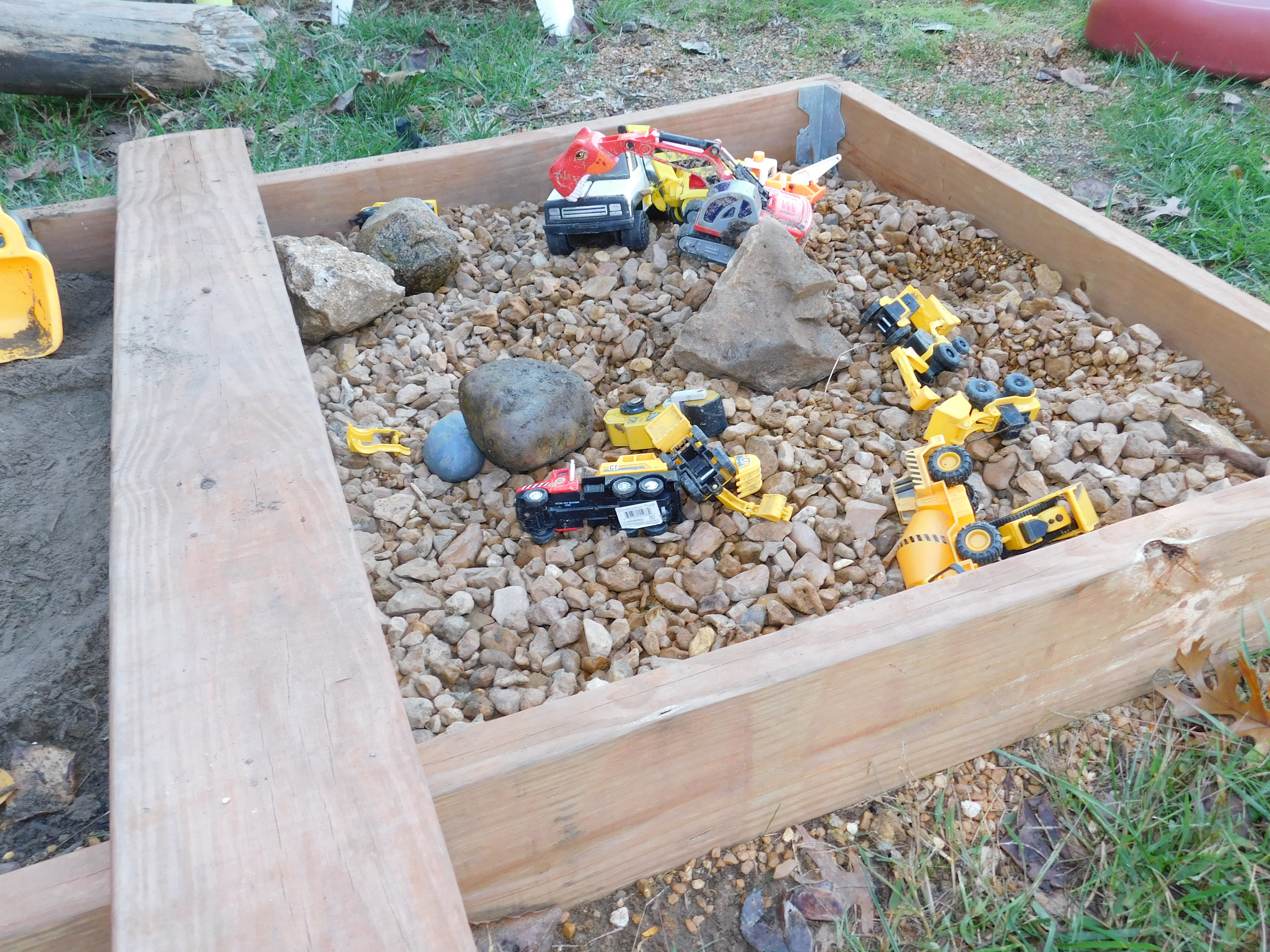
We’re off to Wisconsin this week to attend some exciting new design classes. See you soon with lots of new information and ideas.
In the meantime, I’ve included a past article on the benefits of nature-rich playgrounds and quick ideas for adding natural elements to existing play spaces.
Play is an essential part of a well balanced life whether we are talking about children or adults. As children, play helps guide us into our lives as adults and as adults, play allows us to step back from those lives and de-stress. Spending time in nature is another essential aspect of a healthy life. Combining nature and play creates a winning combination.
Many if not most, US school, park and home play areas today feature a flat area of either grass or asphalt on which to play games and a set of standardized playground equipment for swinging,climbing, sliding and hanging,The equipment often features bright, primary colors or is manufactured to resemble log structures. A public or school playground layout usually is open and often surrounded by benches so that adults can sit while they watch the children playing. Play areas at home are also commonly open spaces and placed so that the children can be seen through windows and from decks and porches.
Knowing what we now know about the benefits of nature, does this type of play space really reap all of the benefits it could? Although this layout certainly gives opportunities for active play and direct supervision, does it maximize time spent outdoors? Are there modifications to this common layout that we should be requesting? The reality is that by changing just a few of the design elements of play areas, enormous gains could be made in the beneficial aspects of play. Not only that, but adding natural materials can help make the space more inviting to people of all ages, encouraging more interaction and adult play.
When designing play areas for children, whether for a public area like a school or park playground or in a client’s backyard, naturalistic landscape designers seek to create safe and appropriate spaces that mimic the natural environment. They understand that the elements of nature welcome children to imagine, to create and to conquer at their own mental and physical pace, unlike the more static and defined manufactured play equipment. Natural play spaces also encourage collaborative play since there are no pre-determined rules to their play and thus help to develop the essential life skills of cooperation and communication.
One of the first things a professional landscape designer considers as he or she begins the process of creating a natural play space is the existing topography. Unlike the flat, open areas of typical playgrounds, a naturalistic site will incorporate existing hills or boulders into the design, giving children mountains to scale and hills to roll down. Rather than eliminating trees because they would be “in the way,” trees and shrubs are intentionally and deliberately selected and placed, perhaps to give shade or maybe to create a vast forest to explore. Plants that attract birds and butterflies give children the chance to closely observe wildlife and imagine what it would be like to soar through the sky.
Nature play spaces that include water and sand give children opportunities to stimulate their senses as well as to experiment with engineering concepts such as digging streams and then damming them to create lakes on which to sail pirate ships. Logs can become balance beams or bridges under which hungry crocodiles are swimming. Piles of dirt and rocks can be the beginning of road construction or a pit where dinosaur bones are discovered. “Cookies” made from slices of tree trunks can be used for paths or stacked to make high rise homes for insects. Raised beds or container gardens let children become farmers and help them understand how food comes to their tables.
Whether the play space is large as in a public park, a school area or just a corner of the backyard, access to a thoughtfully designed nature based play opens a new and exciting world for children that moves beyond the sedentary lure of cell phones and computer screens to an active, energetic lifestyle that will serve them well all their lives.





